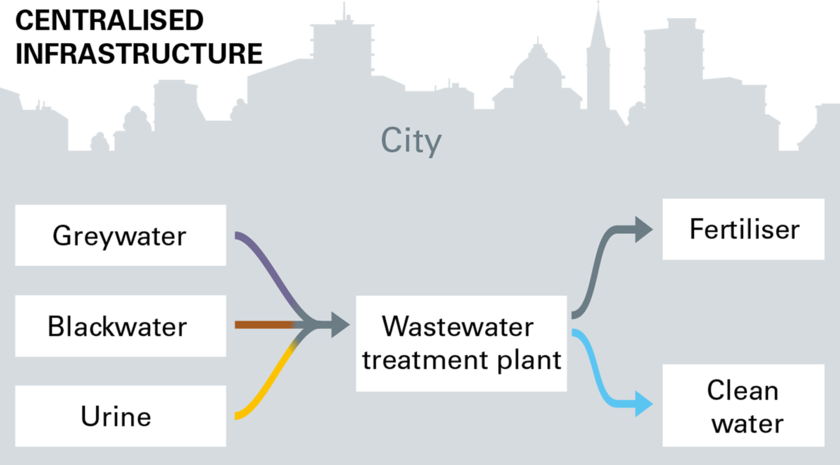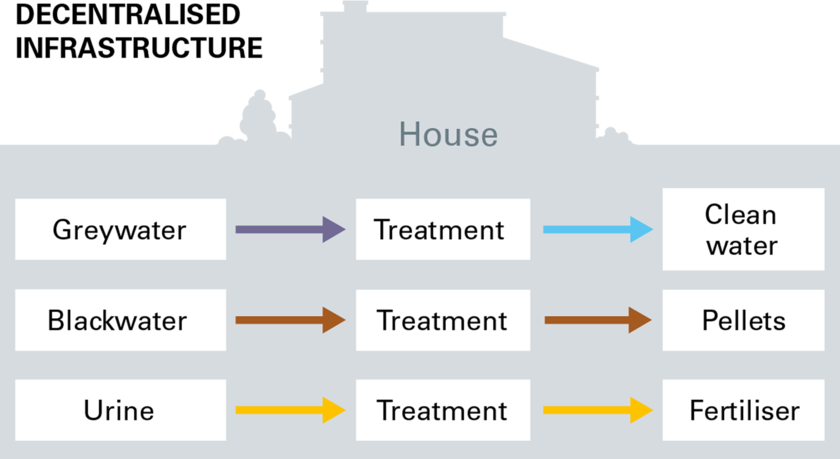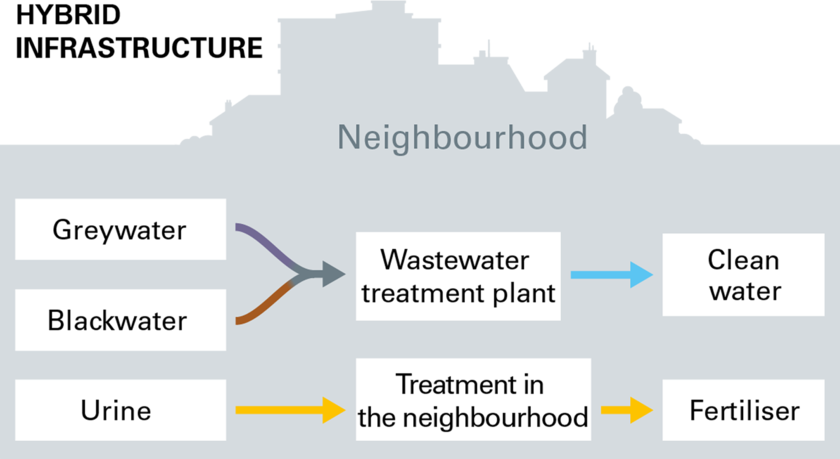Wastewater treatment – centralised, decentralised, hybrid
The example of water clearly shows that there are cycles on different scales: from the very large, the natural water cycle, to the very small, such as the direct reuse of lightly polluted wastewater (greywater) in buildings. There are also different approaches to wastewater treatment with different sized cycles: centralised, decentralised and hybrid approaches. At Eawag, these practices and a wide range of technologies are being researched in various projects in order to find the most sustainable solutions that suit local conditions.

The centralised treatment of wastewater from towns and villages is a good option and the predominant system in Switzerland. All wastewater is collected by means of the sewage system and directed to a central wastewater treatment plant (WWTP), which cleans the wastewater and discharges it into natural waters. Resources such as nitrogen, phosphorus or organic carbon can be recovered in these WWTPs. However, due to the mixing of all substances and the high dilution, this can be a laborious process. And in many countries around the world, centralised systems are not feasible because of a lack of sewage systems or the scarcity of water.
Projects and furter information
Nitrogen recycling by means of air stripping

The treatment of wastewater directly on site is interesting for many situations: in places without a network of sewage systems or with outdated infrastructure, for temporary purposes (e.g. at events or for temporary water shortages) or in public transport (e.g. train toilets). If the different wastewater streams are separated, water can be recovered for reuse in the garden or in sanitary facilities, as well as nutrients for use as fertiliser and organic material, for example in the form of pellets for heating.
Projects and further information

Depending on the conditions on site, combinations of centralised and decentralised treatments can also be beneficial. In such hybrid systems, urine, for example, can be treated decentrally to produce fertiliser, while greywater (lightly polluted wastewater) and blackwater (faeces, toilet paper and flushing water) continue to be discharged into the wastewater treatment plant (WWTP). The nutrients are thus separated at source and the processes are relieved inside the WWTP.
Coexistence of the systems
Each of these three systems has its opportunities and challenges. Therefore, the different approaches will continue to coexist in the future. In addition to the reuse of resources, energy demand, greenhouse gas emissions, costs, process stability and the quality of the treated wastewater must also be taken into consideration. Eawag is working on these issues in order to offer a portfolio of solutions for the future.
